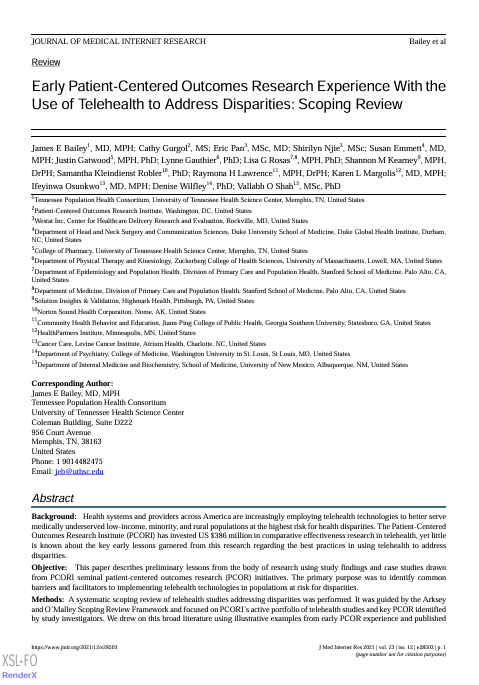Headline
Telehealth interventions that incorporate patient-centered design and culturally tailored solutions are key to improving outcomes impacted by health disparities, a scoping review finds.
Background
Telehealth technology offers potential to mitigate barriers to accessing care, particularly those driven by geography and proximity to health care providers. This scoping review examines the key barriers and facilitators to implementing telehealth interventions among populations impacted by health disparities.
Findings
The review analyzed 41 randomized controlled trials that examined the use of telehealth among populations impacted by health disparities, including rural and economically disadvantaged populations, racial and ethnic minorities, LGBTQ+ individuals, and people with disabilities. The studies focused on various telehealth modalities including mobile devices, web-based interventions, real-time videoconferencing, remote patient monitoring, and asynchronous remote communication (also known as “store-and-forward” interventions). The review identified five key themes for successful telehealth implementation:
- Patient-centered design
- Cultural tailoring of telehealth solutions
- Delivering telehealth through trusted intermediaries
- Partnering with payers to expand telehealth reimbursement
- Ensuring confidential sharing of private information
Policy/Program Takeaways
This review highlights the potential for telehealth to be an effective care delivery approach for populations who most need increased access to care. Health care providers can look to this evidence in considering program design for telehealth interventions.

